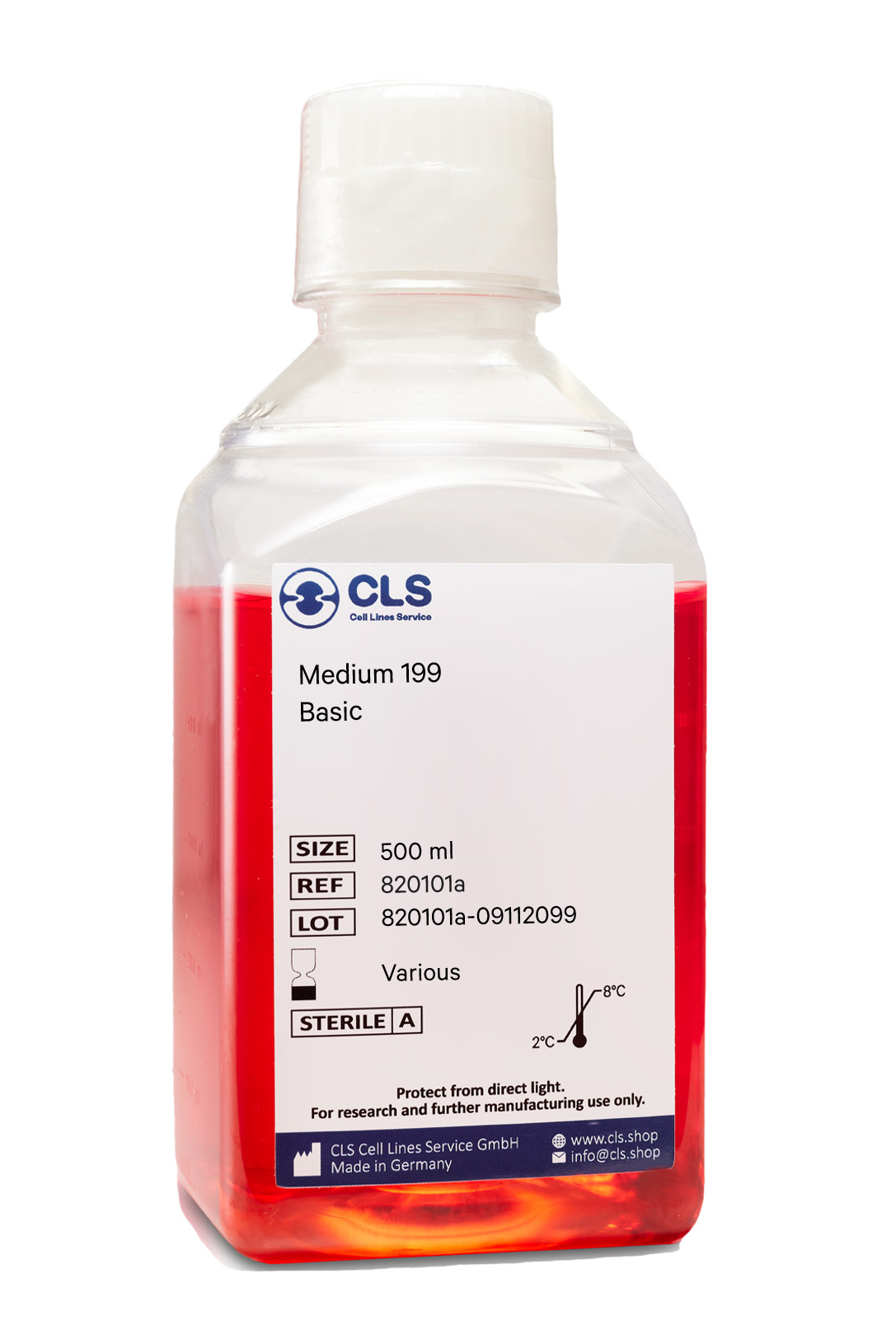Medium 199, w: 2.7 mM stable Glutamine, w: 2.2 g/L NaHCO3, w: EBSS
Medium 199 is a versatile and widely used cell culture medium specially formulated for the cultivation of primary explants. This comprehensive medium combines essential vitamins, amino acids, and other factors to provide a fully defined nutrient source for a variety of cell types. It is particularly suitable for non-transformed cells, making it an invaluable tool for biological research.
Medium 199 offers a range of applications in the field. It can effectively maintain the cumulus-oocyte complex (COC) and support the in vitro maturation of oocytes. Additionally, it is employed in the rinsing of aspiration lines during ovum collection from German Holstein cows. Moreover, Medium 199 serves as an excellent medium for the culture of cardiac endothelial cells derived from rats. These applications demonstrate the versatility and adaptability of Medium 199 to various experimental needs.
History
The development of Medium 199 in the 1950s marked a significant advancement in tissue culture media. Prior to its introduction, many culture media relied on animal-derived products and tissue extracts. However, Morgan and colleagues revolutionized the field by formulating a completely defined nutritional source for cell cultures. Through their experiments involving different combinations of vitamins, amino acids, and other factors, they discovered the exceptional growth-promoting properties of Medium 199.
Quality control
- pH = 7.2 +/- 0.02 at 20-25°C.
- Each lot has been tested for sterility and absence of mycoplasma and bacteria.
Maintenance
- Keep refrigerated at +2°C to +8°C in the dark. Freezing and warming up to +37° C minimize the quality of the product.
- Do not heat the medium to more than 37° C or use uncontrollable sources of heat (e.g., microwave appliances).
- If only a part of the medium is to be used, remove this amount from the bottle and warm it up at room temperature.
- Shelf life for any medium except for the basic medium is 8 weeks from the date of manufacture.
Composition
| Components | mg/L | |
| Inorganic Salts | Calcium chloride x 2H2O | 264,92 |
| Iron (III) nitrate x 9H2O | 0,72 | |
| Magnesium sulfate | 97,67 | |
| Potassium chloride | 400,00 | |
| Sodium acetat x 3H2O | 82,95 | |
| Sodium chloride | 6,800.00 | |
| Sodium dihydrogen phosphate x H2O | 140,00 | |
| Other Components | Adenine sulfate | 10,00 |
| AMP | 0,20 | |
| ATP | 1,00 | |
| Cholesterol | 0,20 | |
| 2‘-Deoxyribose | 0,50 | |
| D(+)-Glucose anhydrous | 1,000.00 | |
| Glutathione (red.) | 0,05 | |
| Guanine x HCl | 0,30 | |
| Hypoxanthine | 0,30 | |
| Phenol red | 10,00 | |
| D-Ribose | 0,50 | |
| Thymine | 0,30 | |
| Tween 80 | 4,90 | |
| Uracil | 0,30 | |
| Xanthine | 0,30 | |
| NaHCO3 | 2,200.00 | |
| Amino Acids | L-Alanine | 25,00 |
| L-Arginine x HCl | 70,00 | |
| L-Aspartic acid | 30,00 | |
| L-Cysteine x HCl x H2O | 0,10 | |
| L-Cystine | 20,00 | |
| L-Glutamine stable | 149,00 | |
| L-Glutamic acid | 67,00 | |
| Glycine | 50,00 | |
| L-Histidine x HCl x H2O | 21,88 | |
| L-Hydroxyproline | 10,00 | |
| L-Isoleucine | 20,00 | |
| L-Leucine | 60,00 | |
| L-Lysine x HCl | 70,00 | |
| L-Methionine | 15,00 | |
| L-Phenylalanine | 25,00 | |
| L-Proline | 40,00 | |
| L-Serine | 25,00 | |
| L-Threonine | 30,00 | |
| L-Tryptophan | 10,00 | |
| L-Tyrosine | 40,00 | |
| L-Valine | 25,00 | |
| Vitamins | 4-Amino benzoic acid | 0,05 |
| Ascorbic acid | 0,05 | |
| D(+)-Biotin | 0,01 | |
| Calciferol | 0,10 | |
| D-Calcium pantothenate | 0,01 | |
| Choline chloride | 0,50 | |
| Folic acid | 0,01 | |
| myo-Inositol | 0,05 | |
| Menadione | 0,01 | |
| Nicotinic acid | 0.025 | |
| Nicotinamide | 0.025 | |
| Pyridoxal x HCl | 0.025 | |
| Pyridoxol x HCl | 0.025 | |
| Riboflavin | 0,01 | |
| DL-α-Tocopherol phosphate disodium salt | 0,01 | |
| Thiamine x HCl | 0,01 | |
| Vitamine A acetate | 0,14 |

